||
One of the best ways to trade high-probability trade setups is by looking for confluences. Confluences are points on the price chart wherein two or more indications signify that the market is moving in a certain direction. Since there are several indications that the price is moving in a certain direction, the odds that the price would move in the indicated direction should be higher.
One way to trade with confluences is to look for confluences of trends. This is because the market can trend on different horizons. For example, the market can be in an uptrend in the long term but is pulling back temporarily creating a short-term downtrend. What we are looking for is a confluence of trend direction. This means that both the short-term trend and long-term trend indicate that it is moving in the same direction.
This strategy is a simple trading strategy based on a confluence of trends. It makes use of the Ichimoku Kinko Hyo indicator to identify the general direction of the long-term trend and the Relative Vigor Index to spot trend reversals in the short-term which points toward the same direction as the long-term trend.
Ichimoku Kinko Hyo – Kumo
The Ichimoku Kinko Hyo indicator is one of the most complete trend-following technical indicators. It can be considered as a trading system all by itself. This is because it has several components which could represent different trend horizons.
Chikou span or lagging span is the current period’s closing price and is plotted 26 periods back. This line mimics the movement of the immediate price action and can help determine support or resistance levels based on price action swings.
The Tenkan-sen or conversion line is the fastest moving line. It is the midpoint of price over the past nine periods.
The Kijun-sen or baseline is a notch slower than the Tenkan-sen and is the midpoint of price over the last 26 periods.
The short-term trend can be identified based on how the Tenkan-sen and Kijun-sen lines interact. The area between these two lines can also act as an area of dynamic support or resistance during a strong trending market.
Senkou Span A or leading span A is calculated as the average of the Tenkan-sen and the Kijun-sen and is plotted 26 periods ahead.
Senkou Span B or leading span B is the midpoint of price over the last 52 periods and is plotted 26 periods ahead.
Senkou Span A and Senkou Span B form the Kumo or cloud, which represents the long-term trend direction.
The long-term trend can easily be determined based on how the Senkou Span A and Senkou Span B interact. The long-term trend is bullish whenever the Senkou Span A is above the Senkou Span B and bearish if they are stacked inversely. The shade within the Kumo also changes depending on the direction of the long-term trend. It is sandy brown whenever the long-term trend is bullish and thistle whenever the long-term trend is bearish.
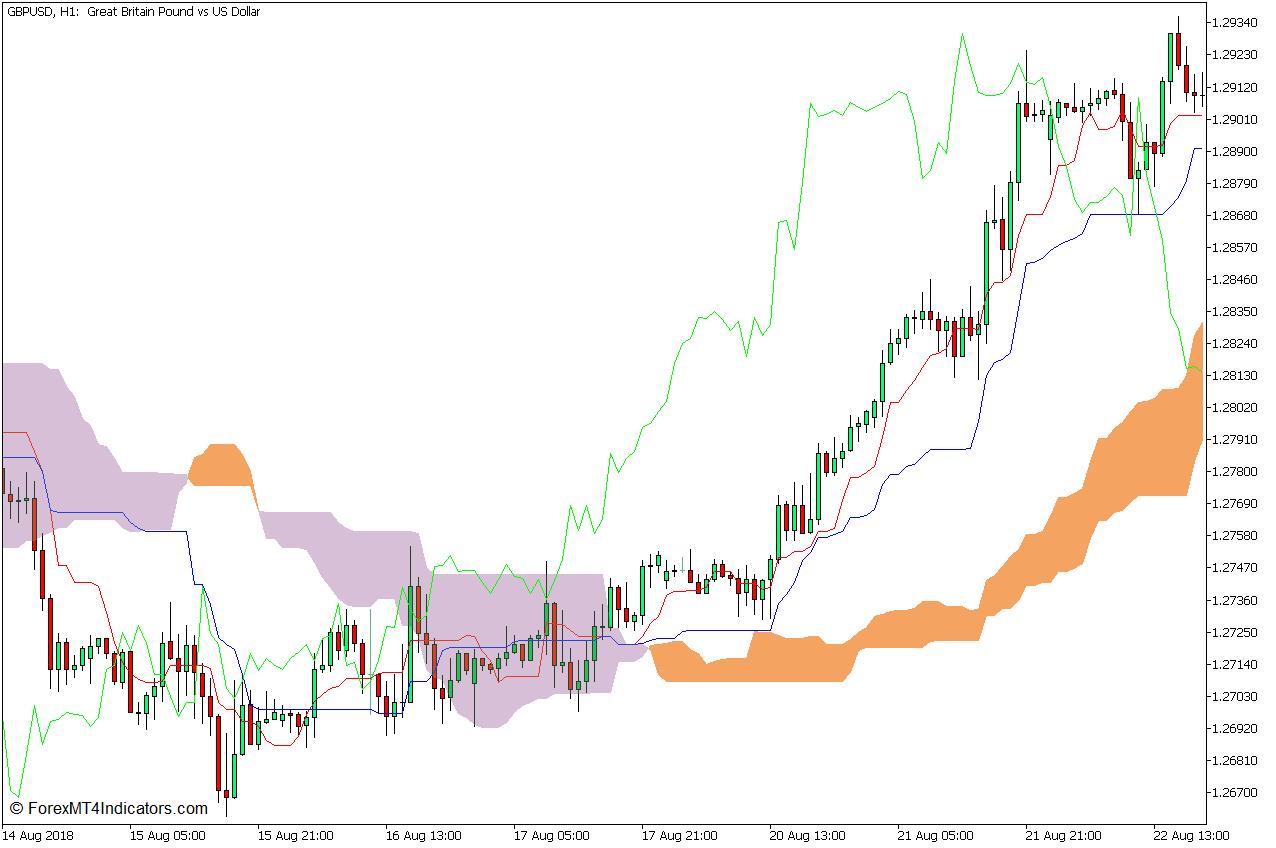
Relative Vigor Index
The Relative Vigor Index (RVI) is an oscillator type of technical indicator that indicates momentum direction based on the thesis that price typically closes higher in up trends and lower in downtrends.
The RVI uses an algorithm that calculates the difference between the closing price and the opening price on a series of bars and then uses this as the numerator of the next step, and the difference between the high and low of each bar then uses this as the denominator of the next step.
In the next step, it then divides the Simple Moving Average (SMA) of the numerator by the SMA of the denominator.
The RVI plots two lines that oscillate freely around a midline that is zero. The RVI line (green) is the faster-moving line, while the signal line (red) is the slower-moving line. The momentum is bullish whenever the RVI line is above the signal line, and bearish whenever the RVI line is below the signal line. Crossovers between the two lines can be considered as a momentum reversal signal.
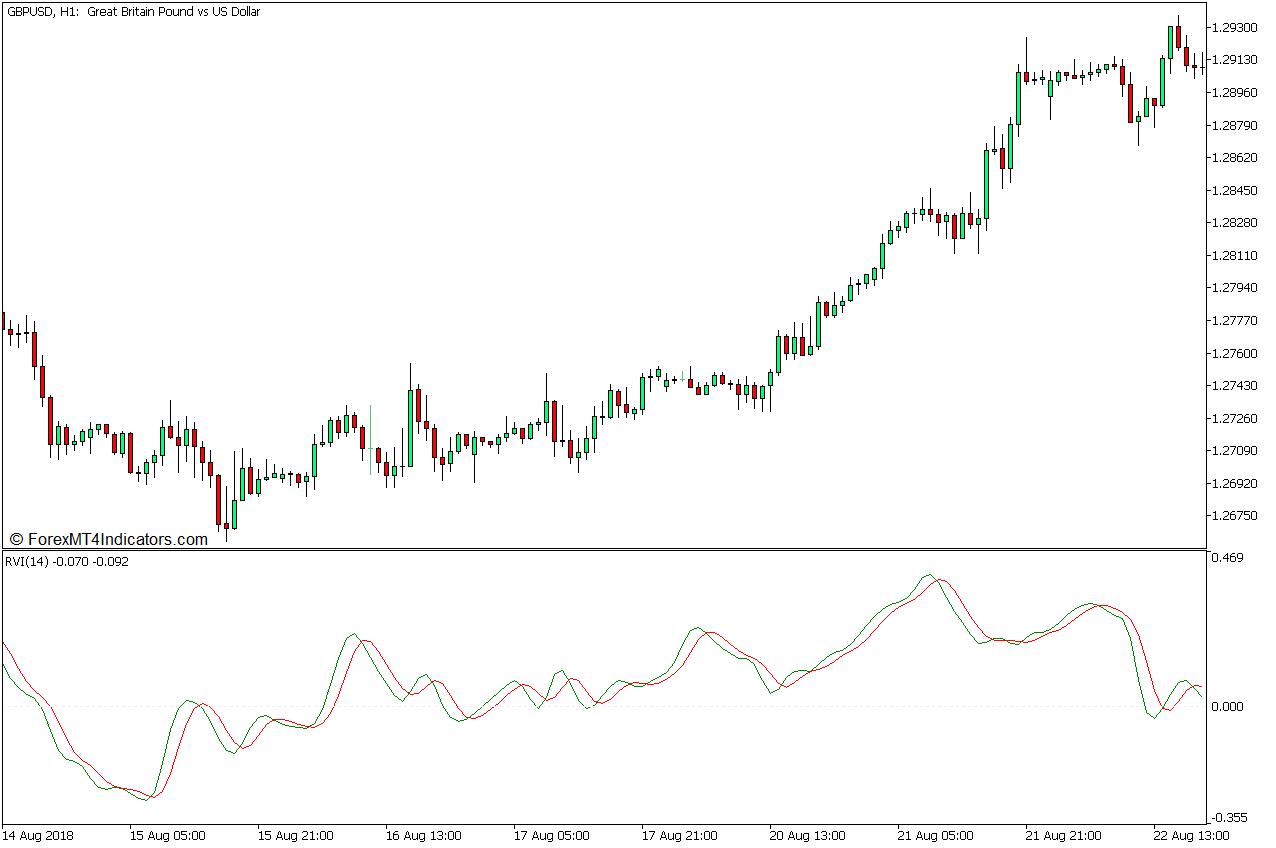
Trading Strategy Concept
This trading strategy is a trend continuation strategy that aligns with the long-term trend direction and the short-term momentum reversals.
We will retain only the Kumo of the Ichimoku Kinko Hyo since we will be using it to determine the long-term trend direction or bias.
The long-term trend direction is based on the color of the Kumo, as well as the general location of price action about the Kumo. Traders should also visually confirm the long-term trend direction based on the characteristics of price action. Trades are taken exclusively in the direction of the long-term trend as indicated by the Kumo.
We then wait for the price to pull back near the Kumo. As the price pulls back near the Kumo, we then wait for a signal indicating the resumption of the momentum in the direction of the long-term trend. This is based on the RVI line and its signal line crossing over in confluence with the Kumo trend direction.
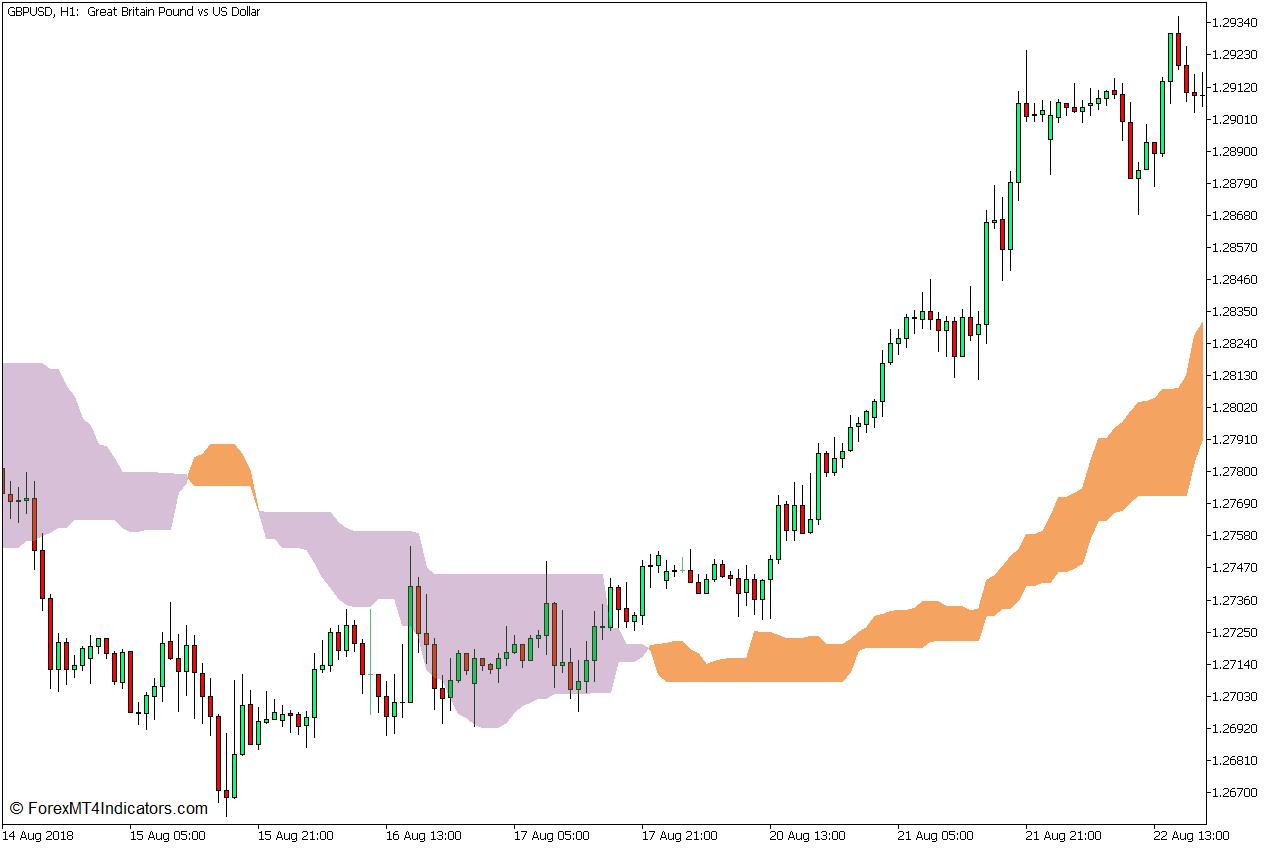
Buy Trade Setup
Entry
- Price action should be above the Kumo.
- The Kumo should be sandy brown indicating a bullish long-term trend.
- Open a buy order as soon as the RVI line crosses above its signal line.
Stop Loss
- Set the stop loss on a support level below the entry candle.
Exit
- Close the trade as soon as the RVI line crosses below the signal line.
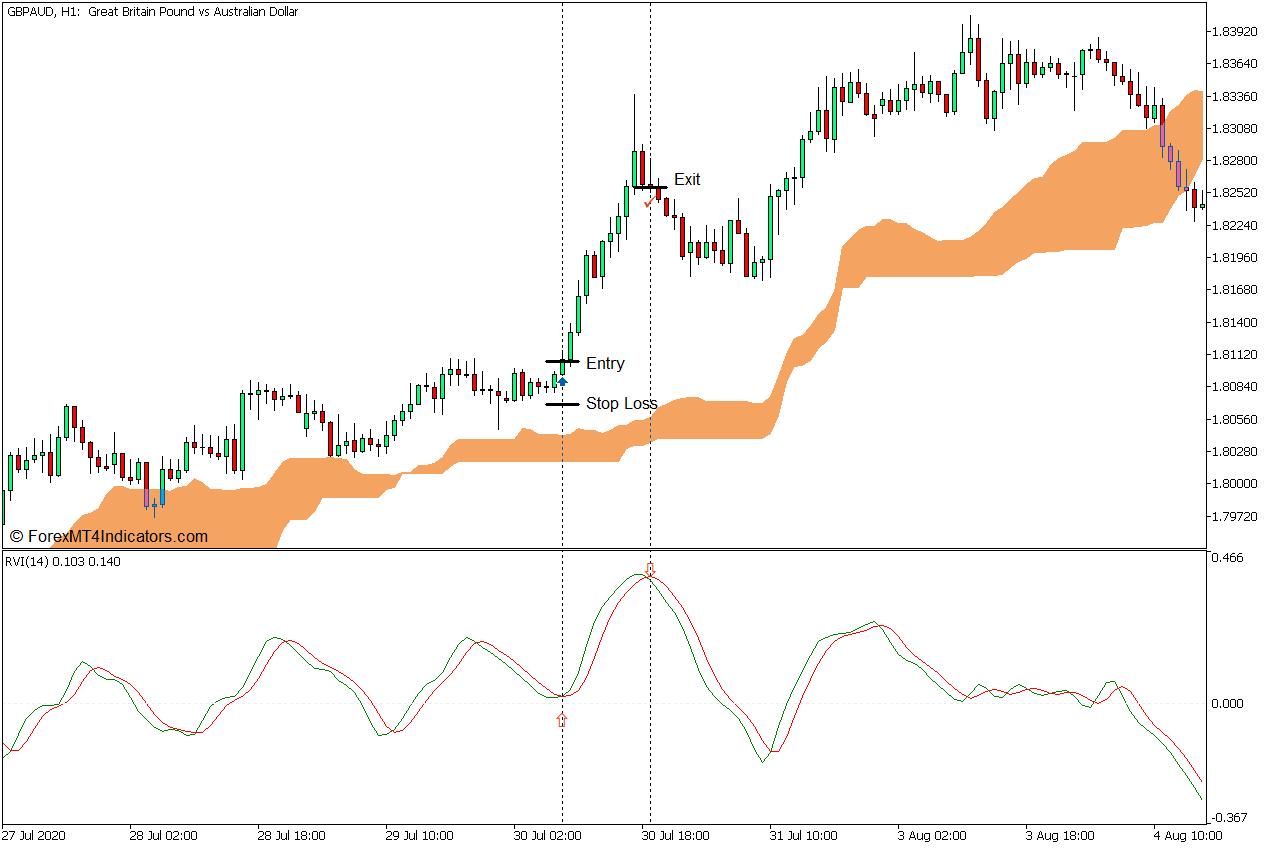
Sell Trade Setup
Entry
- Price action should be below the Kumo.
- The Kumo should be thistle indicating a bearish long-term trend.
- Open a sell order as soon as the RVI line crosses below its signal line.
Stop Loss
- Set the stop loss on a resistance level above the entry candle.
Exit
- Close the trade as soon as the RVI line crosses above the signal line.
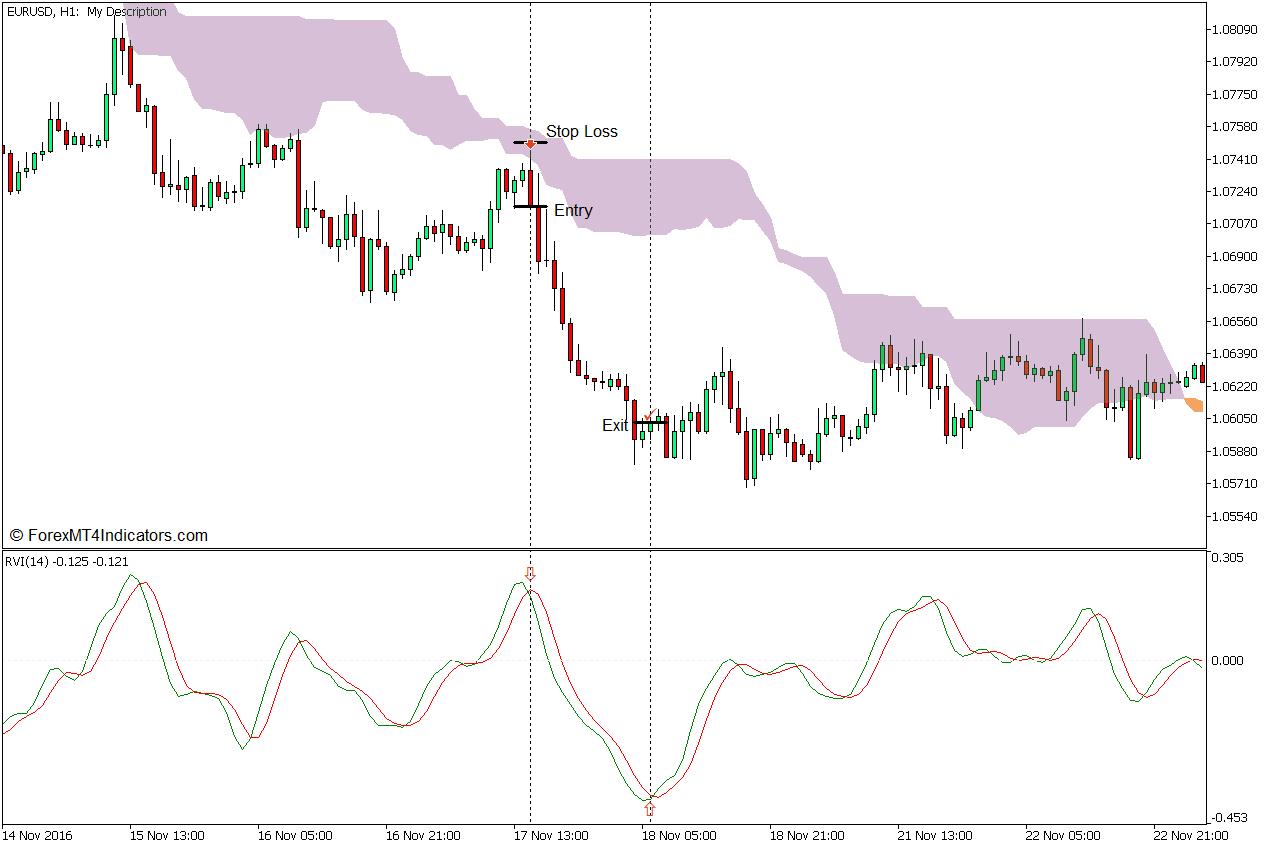
Conclusion
This strategy is a trend continuation strategy of a very strong long-term and mid-term trend confluence, while its entry signal is based on the short-term momentum reversal.
Since this strategy trades on a very strong trending market, it is important to observe whether the market is overextended or not. Apply caution when trading on an overextended market as it may also reverse.
It also works very well whenever price action has pulled back closer to the Kumo. Confluences with price action, candlestick patterns, and divergences could also significantly improve the likelihood of a profitable trade using this trade setup.
Recommended MT5 Broker
- Free $50 To Start Trading Instantly! (Withdrawable Profit)
- Deposit Bonus up to $5,000
- Unlimited Loyalty Program
- Award Winning Forex Broker
- Additional Exclusive Bonuses Throughout The Year

>> Claim Your $50 Bonus Here <<
Click here below to download:
Save
Save
Get Download Access
||
-----------------------------------------------------
By: Tim Morris
Title: Kumo Relative Vigor Trend Forex Trading Strategy for MT5
Sourced From: www.forexmt4indicators.com/kumo-relative-vigor-trend-forex-trading-strategy-for-mt5/?utm_source=rss&utm_medium=rss&utm_campaign=kumo-relative-vigor-trend-forex-trading-strategy-for-mt5
Published Date: Mon, 11 Mar 2024 04:54:04 +0000
Read More
.png) InvestingStocksToolsClubsVideosPrivacy PolicyTerms And Conditions
InvestingStocksToolsClubsVideosPrivacy PolicyTerms And Conditions
